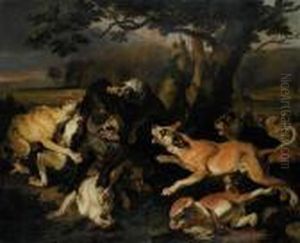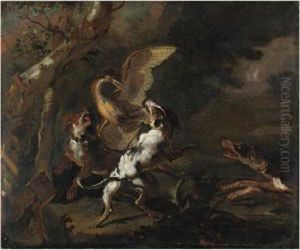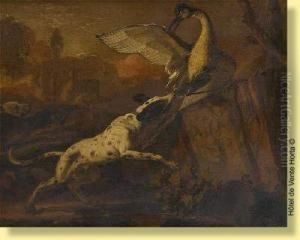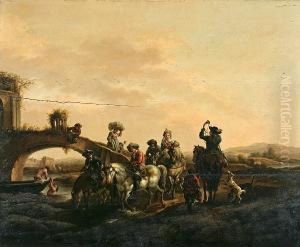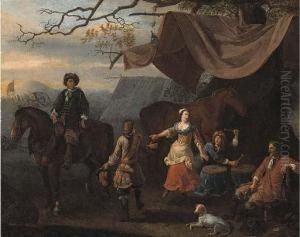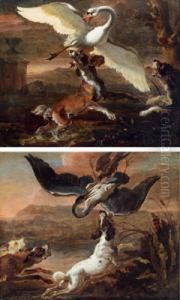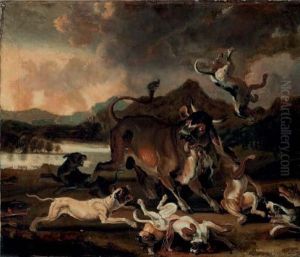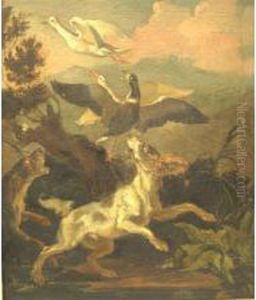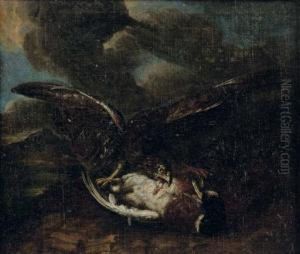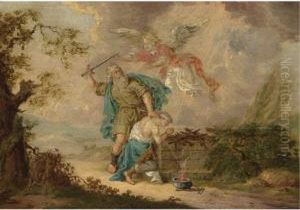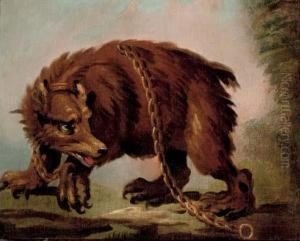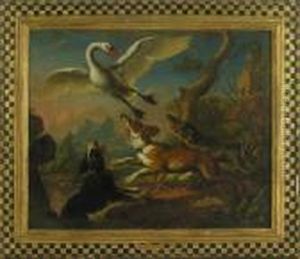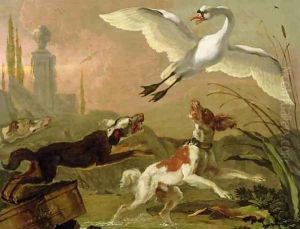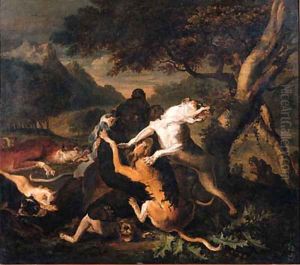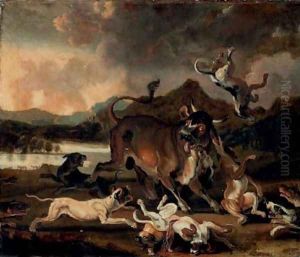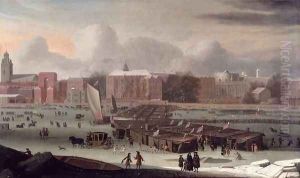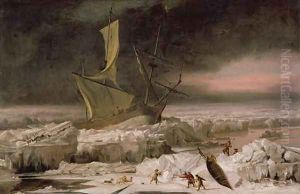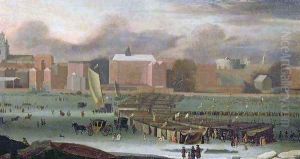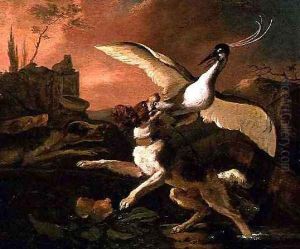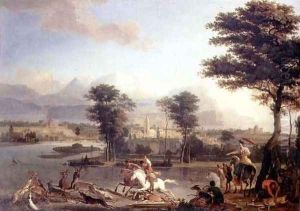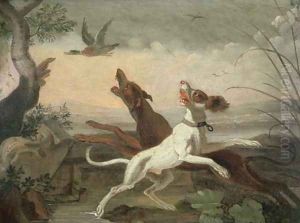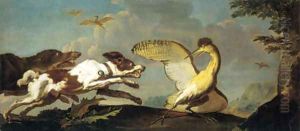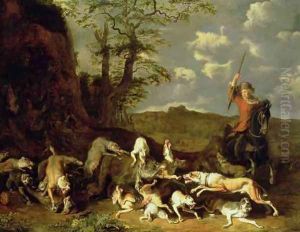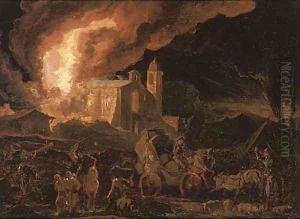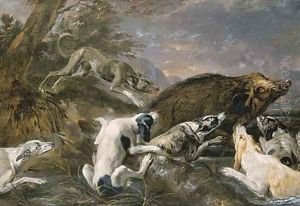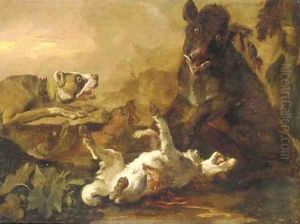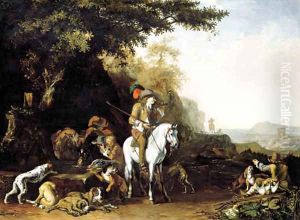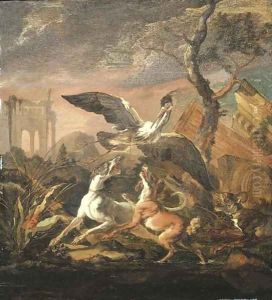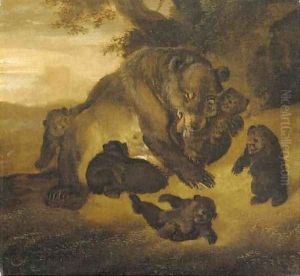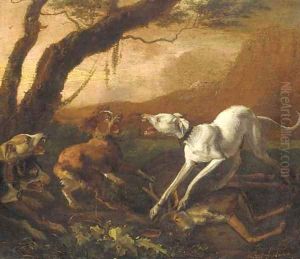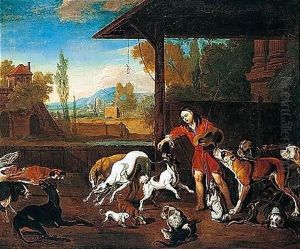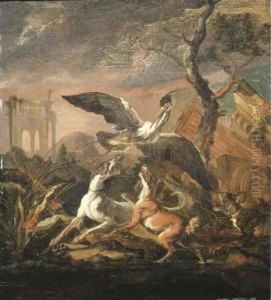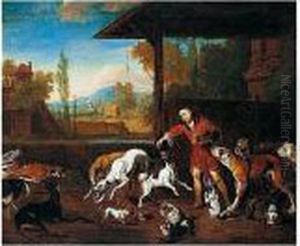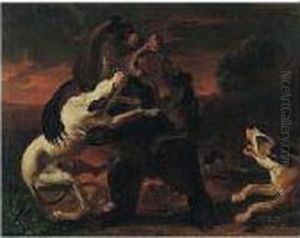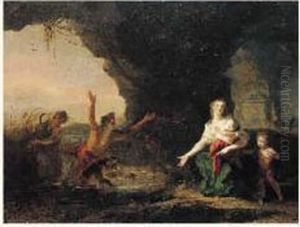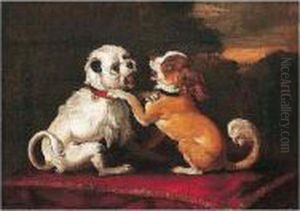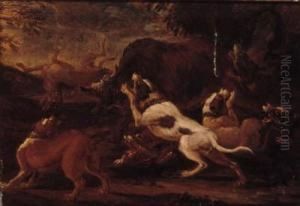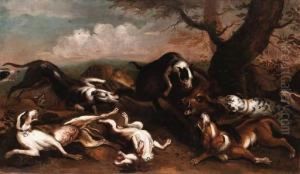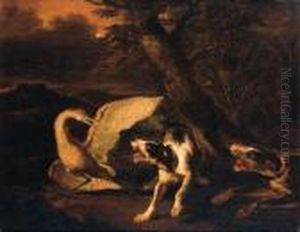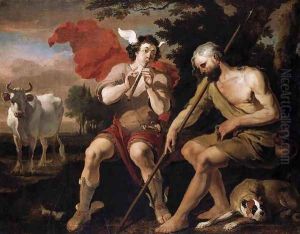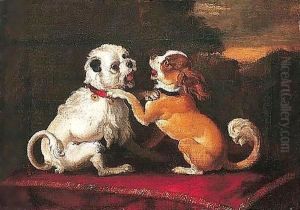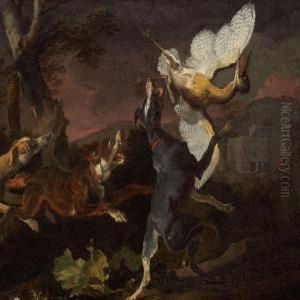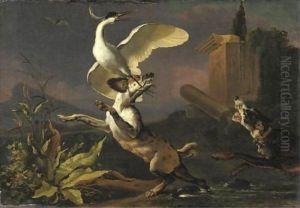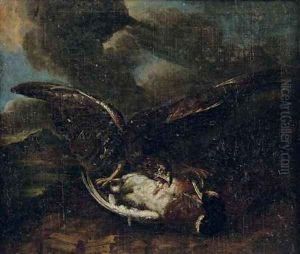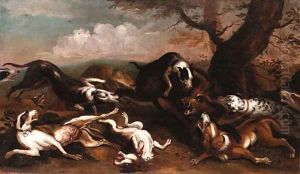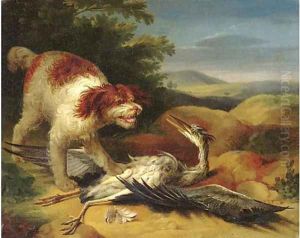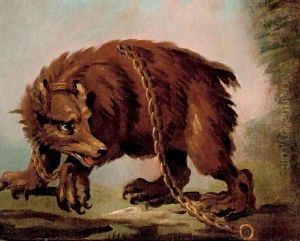Abraham Danielsz. Hondius Paintings
Abraham Danielsz. Hondius was a Dutch Golden Age painter who was born in Rotterdam in the year 1625. Not to be confused with the more famous landscape painter Hendrick Hondius of an earlier generation, Abraham was primarily known for his works as an animal and landscape painter, although he also created some marine and hunting scenes. His style was influenced by the prevalent Baroque sensibilities of the time, which favored dynamic compositions, dramatic lighting, and a vivid sense of realism.
After spending his early years in the Netherlands, Hondius moved to England around 1666, the year of the Great Fire of London, and this event may have influenced his decision to relocate. In England, his work began to gain recognition, and he became part of the London art scene, contributing to the development of English landscape and animal painting.
Hondius's paintings often depicted dramatic hunting scenes, serene landscapes, and detailed animal studies, which showcased his skill in capturing the textures of fur and the movement of the animals. His work reflects a keen observation of nature and an ability to translate these observations into compelling compositions. He was also known to paint biblical and mythological subjects, as well as portraits, although these were less common within his oeuvre.
Despite his talent, Abraham Hondius did not achieve the same level of fame as some of his contemporaries. Nevertheless, his work was appreciated by connoisseurs and collectors of the time, and today his paintings can be found in various museums and private collections. Hondius's legacy is that of a skilled painter who contributed to the richness of the Dutch Golden Age of painting, even as it extended into the English art world of the late 17th century.
Abraham Danielsz. Hondius passed away in 1691, leaving behind a body of work that continues to be studied and admired for its contribution to the Dutch and English schools of painting. His art remains a testament to the enduring appeal of naturalistic representation in European art and provides valuable insight into the artistic exchanges between the Netherlands and England during a pivotal period in art history.
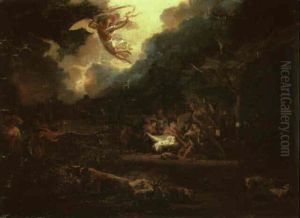
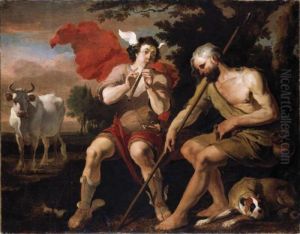
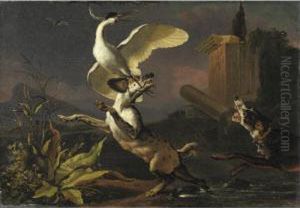
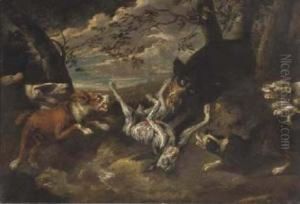
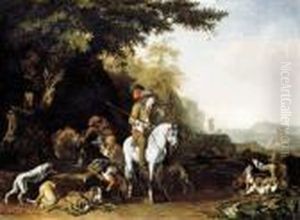
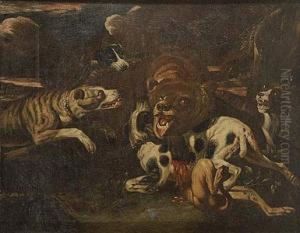
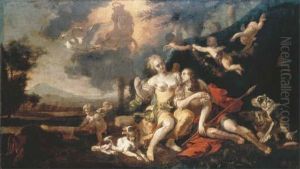
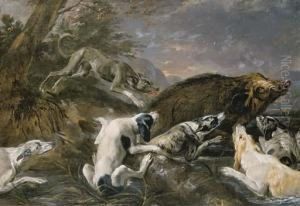
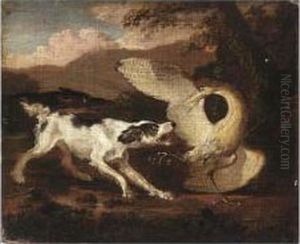
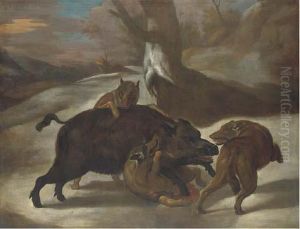
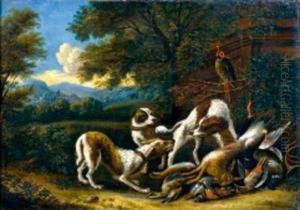
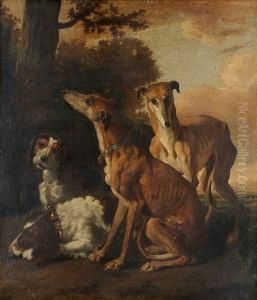
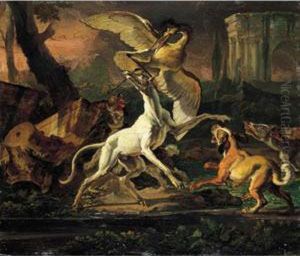
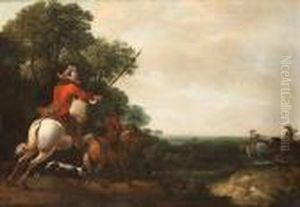
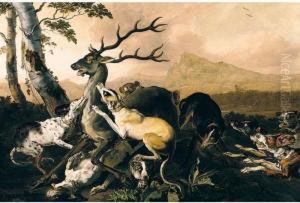
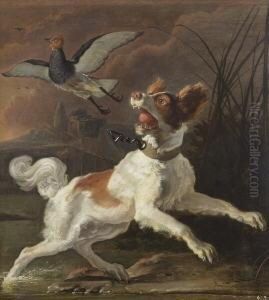
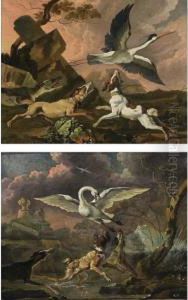
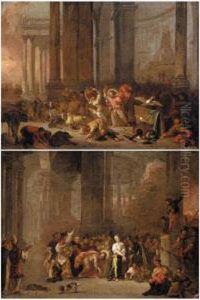
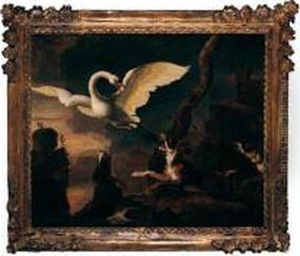
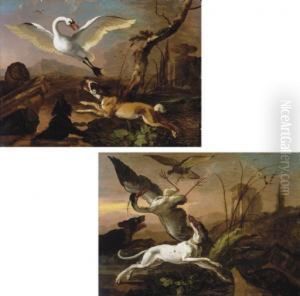
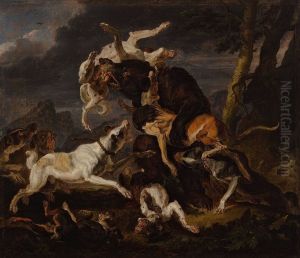
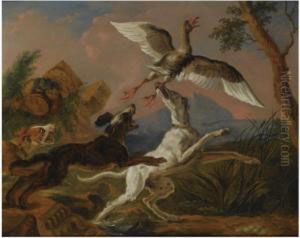
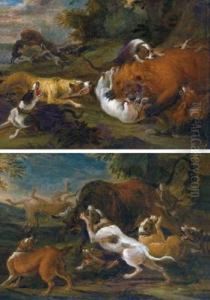
![[circle Of Abraham Hondius ; A Dog Quarelling With A Cat ; Oil Oncanvas]](https://www.niceartgallery.com/imgs/1377021/s/abraham-danielsz-hondius-circle-of-abraham-hondius-a-dog-quarelling-with-a-cat-oil-oncanvas-e96b2b46.jpg)
